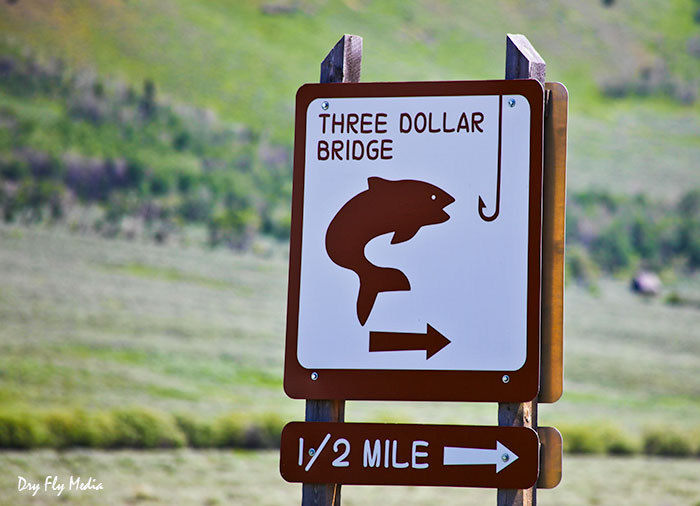
We have, as have many of you, been closely watching the at times contentious story of the movement to control address the flow of traffic on the Madison River, traffic which continues to increase for a host of reasons, none topping the fact that the Madison is a gem of a river and a wonderful fishery.
We’ve been fairly vocal here on Chi Wulff about our position on the issues at hand; hell, we’re a fly fishing blog, with a great number of friends in “the industry” and have lived, worked, raised a family, and run businesses in Montana for years (my wife and I, Mark, aren’t in Montana currently as we finish projects in Texas, but will be back; our offspring still reside, work, fish, hunt, and play in the state).
Specifically to issues at hand, we’ve found ourselves increasingly at odds with the positions of the Madison River Foundation, an organization we’ve supported for over a decade here on ChiWulff. Several weeks back a member of the MRF board left a comment on a post about the Madison and emailed me as well; we’ve exchanged (polite) emails over a period, and the board member (Jim Dawson) agreed to answer a series of interview questions here on CW, a gesture I found both surprising and refreshing, having been refused a similar request for comment from the MRF team in months prior.
Several friends back home in Montana have condemned my effort in reaching out, though I’ve persisted for several reasons, the principle reason being I for one would truly like to see overcrowding / overuse on the Madison addressed (though I strongly personally believe that restricting commercial use only is a fool’s errand and won’t fix a damn thing in reality – perhaps I’ll share my explicit rational at another time.)
Jim responded expeditiously, and in my opinion with an earnest and sincere effort, to my questions this past week, and I’ll post today and tomorrow the questions and his responses exactly as provided to me. OF NOTE, I personally DO NOT AGREE with the position he’s taken representing the MRF board on several points, and have interjected with clear demarcation several times below, and will expound further at some point in the future, though my intent today and tomorrow is to allow a representative of the MRF to “have their say” in response to key questions, with the ultimate intent of perhaps helping to broker a larger dialogue with the goal of genuinely addressing, at some point, the entirety of the critical issues impacting the Madison.
One final personal opinion point – Friday I learned through the grapevine that Lauren Wittorp had resigned as ED of the MRF; I never personally had the opportunity to meet or speak with her, and duly recognize that the MRF has indeed accomplished some worthy things for the Madison during her tenure. IF the allegations regarding personal duress she’s endured during this process are accurate, I personally condemn in the strongest terms possible those who allegedly fostered personal attacks toward her. That said, in my opinion the MRF board is culpable to a degree for allowing the escalation of the MRF vs. town vs. “the industry” rhubarb (whether real or perceived) to spin out of control, with Ms. Wittorp serving as the figurehead, and public focus, of the organization. Hopefully critical lessons have been, and are still being, learned.
Non-outfitted use is an overwhelming majority of all Madison River use by FWP numbers (example reference). Curtailing outfitter use/access only does very little to address the genuine health of the river and current overcrowding. Please explain the MRF’s advocacy to limit commercial traffic only.
The MRF’s position has been to support both the conclusions of and the recommendations made by FWP as it relates to crowding on the Madison River, as stated prior to the initiation of the NRC process. The MRF wholeheartedly agrees that only addressing outfitter use is a partial solution to a larger problem. We believe that, although not perfect, FWP’s data is the best available and that it should be weighed heavily in any decision-making process; but crowding is a social problem, and thus inherently more difficult to address. To claim that the MRF’s position is ONLY to limit commercial use is incorrect. However, it is the most logical and easiest place to begin given that commercial use is better understood and is already under the jurisdiction of FWP.
The MRF believes that an urgency exists to address this issue before the fishery is adversely impacted and that, even more important than crowding, the health of the fishery should be everyone’s number top concern. We hope that FOAM would agree and that they would join the MRF in proactively advocating on behalf of the fishery before it reaches a tipping point.
What proposal(s) does the MRF support, if any, to address global use on the river, not just outfitter or guided traffic? For example, simply stipulating that non-commercial anglers and recreational users must purchase a parking pass (i.e., a $5 use pass) to use any access site, such as is done on the Bighorn and the South Fork of the Snake, would allow rudimentary tracking and provide a source of funding for projects, etc.
Constraining the public’s use of a public resource will be a time consuming and difficult effort. One that, before it can be completed, will require more data to better understand. The MRF believes that a river use stamp or parking passes, initially free or at some nominal cost, are good ideas that would lend critical data and funding to pay for and inform whatever future proposals that might be made.
Knowing the Big Bend area of the Upper Wade section and the lower Channels section is all but functionally impossible to wade to and stay in the high water mark, has MRF worked with any of the adjoining landowners in these areas for angler right of ways or access partnerships? Even a simple trail from $3 Bridge to Pine Butte/Eagles Nest would go a long way to address the access issue. Without such, much of the proposed wade sections would be effectively privatized.
Privatization is not an issue as no one is advocating for the sale or transfer of public land to private entities.
A very small number of the MRF’s membership owns property in these sections, and the HOAs there have not been formally contacted by the MRF on their willingness to provide a conservation easement thru their properties. It certainly is an interesting question, one that is worth posing to those organizations. I’d propose that the MRF and FOAM jointly go to these HOAs in seeking an easement or permission to use the river trail to walk thru these areas, thereby allowing FWP to maintain their Walk Wade and Float sections as proposed.
On the assertion that it’s all but functionally impossible to access the upper stretch, I would not agree. When the upper section was designated as a Walk/Wade over 30 years ago, it was done because of ample access and parking. (Hwy 87, Hwy 287, Raynolds pass, $3 Bridge, Pine Butte, Eagle Nest day use area, Riverview campground, the Sundance Bench road, the West Fork, etc.) Granted that not all of these stretches are easily walked for their entire lengths, for everyone, but where in Montana’s wilderness is?
One of the more exciting MRF funded efforts that will kick off this spring is a riparian improvement project at the $3 bridge where the MRF will be improving walk wade access, via walkways and elevated paths, while improving the riparian ecology and keeping grazing cattle out of the streambed.
What has been described as MRF advocacy for something that violates Montana’s stream access laws is simply not true, as confirmed by the state. The issue at hand is FWP regulation that separates wade/walk fishing from float fishing. When initially implemented decades ago, these regulations were done to minimize the conflict that existed between floating anglers and wading anglers. The MRF believes that the reasoning used then to justify that separation is even more valid today given the growth in angling pressure.
This is not, as the outfitting community has stated, the best way to “even out” angling pressure as the angling pressure inside the walk wade sections has grown significantly there as well. On a recent July evening I counted 50 parked cars at the $3bridge access area! Crowding is a problem that affects the Madison river everywhere, not just in the float fishing section.
Separating Walk Wade fishing from float fishing is an important issue that enjoys wide support from a majority of the MRFs membership, many of whom choose to wade fish either because they can’t afford to book a guide, don’t own a boat, or simply choose to; and they enjoy the ability to fish free from competition from floating anglers.
I get concerned when false assertions are made, as Montana Angler did in their otherwise fair statement on their blog: “A small group of individuals supported primarily by land owners has proposed eliminating boats from the upper wade area and eliminating drift boats and larger watercraft from the lower wade area or “channels”. As someone who is extremely close to this issue, I have not heard of any such proposal nor has this subject ever come up in any meeting of the MRF. Yet people read the assertion, get inflamed at the potential threat to public access and immediately blame the MRF for a position they did not create. I believe this narrative was manufactured to evoke a response that unfairly paints the MRF as “a lobbyist for rich upstream landowners.” I am telling you that narrative is BS. (I realize that may sound self-serving and suspicious); but know that if the NRC process delivers a proposal, the MRF would be pragmatic in agreeing to something that would work for everyone.
It is also important to note that guides can take clients into the walk wade sections today as is also the case with the Upper Beaverhead, the Gallatin and fishing inside YNP.
[CW comment – note my question stated the term “effectively privatized”, perhaps a better word choice could have been used on my part. No one that I’ve read has said the river would legally privatized, as that’s not currently possible under Montana law. Functional privatization is the issue at hand.
Commentary abounds as to the functional, practical difficultly wading the Madison in the sections noted; it’s been stated so many times by authorities on the river I’ll not repeat it here. If any member of the MRF board would choose to persist in countering the stated opinions of these authorities, I’d be happy to organize a group wading excursion for some actual “boots on the streambed” field research.]
The second part of Mr. Dawson’s comments will follow tomorrow. Please note comments are moderated; please keep it civil and constructive.

